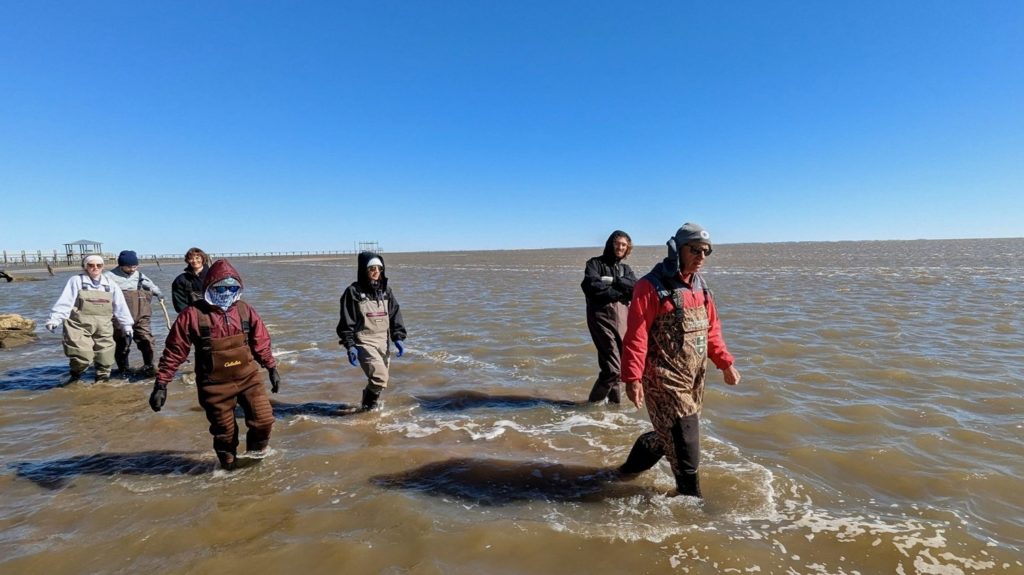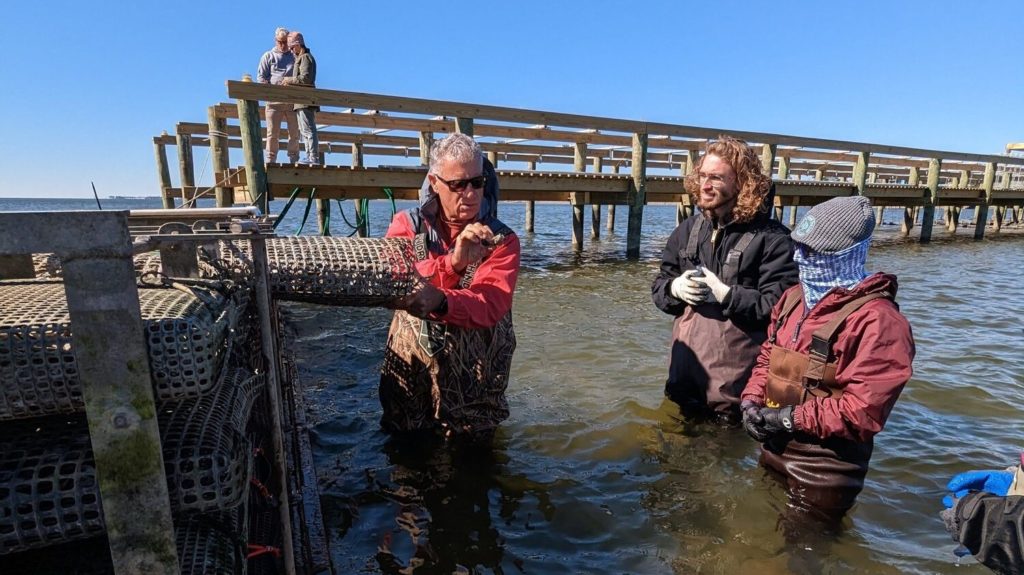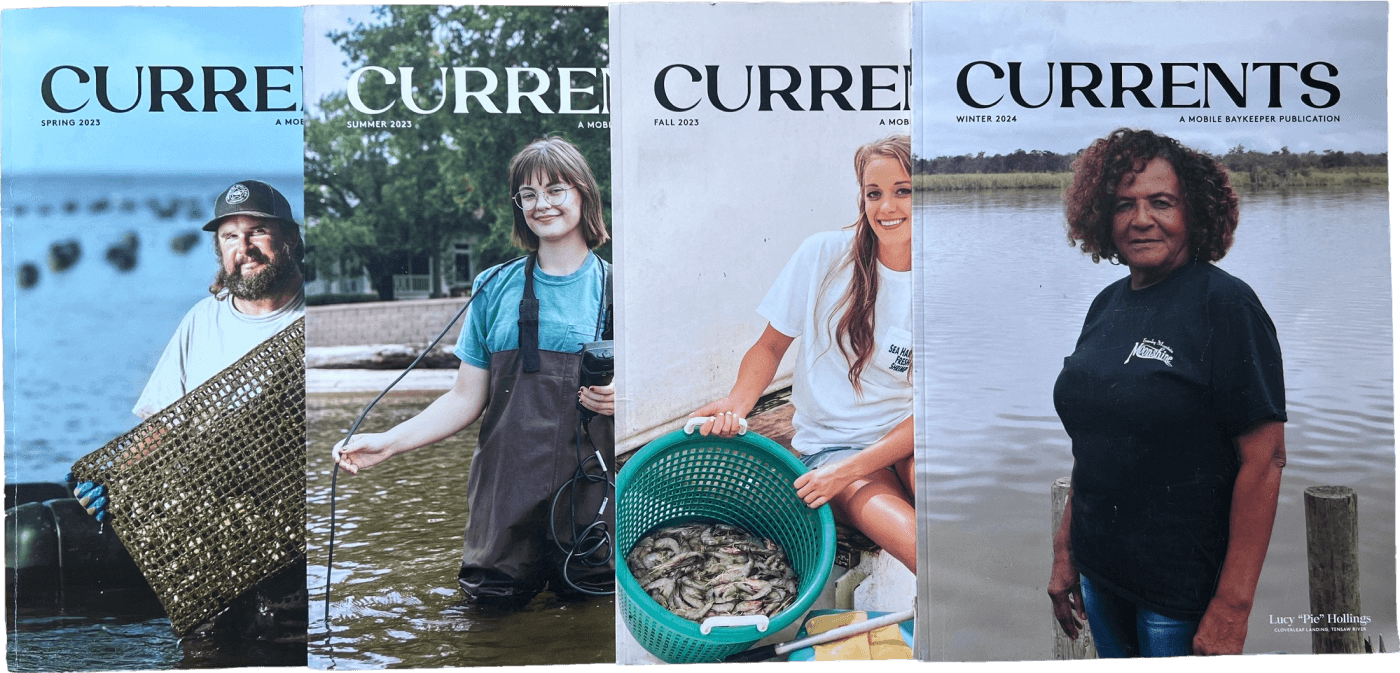
By Josh Tolbert
When we talk about the best parts of our job here at Mobile Baykeeper, we never fail to mention the days we get out of the office and in the water. Recently, the Patrol Team went out to spend a day learning more about oyster farming and the problems oysters face in coastal Alabama.
The prospect of wading out to see live oysters and how they can be raised kept our spirits high on a chilly day in the water. The car ride down was a nice drive with beautiful views of the morning sun rising over the bay.
We arrived at the home of Andy DePaola, situated on the western shore of Mobile Bay. Greeted by a cold northeast wind, we stood eating blood oranges from Mr. DePaola’s tree while he showed us early prototypes for his oyster farming invention dubbed “The Shellevator.” After a short walk to look at his hanging oyster baskets on the dock and a waded tour of the shoreline, we set off to Coden to get our hands dirty.
There is one constant in coastal Alabama and that is that things are always changing. Perhaps no other creature feels the dynamic effects of tides, salinity, and temperatures as much as the oyster does. While fish and other animals can move themselves to different areas, oysters are sessile or stationary. They can not move on their own, except for a brief period when they are microscopic larvae. Oysters are resilient creatures that provide a myriad of ecosystem benefits from habitat creation to water filtration and nutrient sequestration. However, even with their resilient adaptations, they can become stressed when faced with both natural and manmade pressures.


Extensive oyster populations were once found throughout Mobile Bay and the Mississippi Sound. However, the overharvest of reefs for both food and industrial uses like concrete during the 20th century have caused a collapse of the historic populations along Alabama’s coast. Once gone, oysters and all the benefits they provide are hard to restore. These ancient oyster populations were created over vast periods of time and will take a good while to recover. But it’s not all doom and gloom for our oysters. There are current attempts at restoring some of the historic populations.
Main efforts have been concentrated around Cedar Point and areas westward with varying success. These new reefs use artificial materials, recycled concrete, and limestone to give wild oysters structure to cling onto. Despite these efforts, there are still many issues facing oysters today. Stormwater runoff from increasingly urbanized areas, sewage spills, and nutrient input contribute pollution and cause algal blooms which starve the oysters of oxygen. Climate change pressures such as increasing temperature and sea level rise will continue to become a bigger threat to wild oysters as well as farmed ones. Additionally, ocean acidification can lead to thinner oyster shells and a greater sensitivity to predation.
Once we reached the Mississippi Sound, we donned our waders and climbed into the calm and clear water. We made our way to what looked like a miniature barge carrying hundreds of oysters in baskets, Andy’s “Shellevator.” Soon, we were handling oysters, weighing bags, and transferring to prevent overcrowding. Before we knew it, it was time to head back to the office for some well-deserved lunch. While wading back to shore, we saw what remained of an old oyster reef. The sandy bottom changed to a harder substrate, and looking down, we could see pieces of shell stuck to the bottom. It was a strong reminder of what we once had and what Mobile Baykeeper hopes to one day see return.
